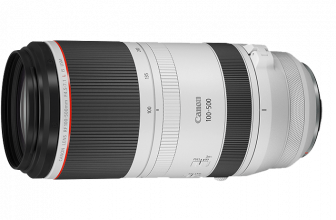
Darktable 4.2.0 is now available, adding new features to the open-source Raw image editing application. Among the key additions are a Sigmoid display transform module, a pair of new algorithms within the highlight reconstruction module, a reworked pixelpipe for image display in the darkroom view, improved user interface, lens correction information being accessible from EXIF metadata, improved slideshow and more.
Starting with the Sigmoid display transform module, this can be used in place of the existing filmic and base curve modules. As outlined in the in-depth darktable 4.2.0 user manual, you use the Sigmoid display transform module to remap the tonal range of image using a generalized log-logistic curve. You can use the module to expand or condense the dynamic range of a scene to correspond to the dynamic range of a display.
 |
The new algorithms within the highlight reconstruction module are ‘inpaint opposed’ and ‘segmentation based.’ The former algorithm ‘has proved very stable and provides good results in many images,’ writes the darktable team. Accordingly, it has replaced ‘clip highlights as the new default algorithm within the app.
When working with multiple windows, users can now take advantage of the pixelpipe used for image display in the darkroom view. This has numerous consequences, including allowing users to use a second darkroom image window with focus peaking and ISO-12646 color assessment modes, an improved snapshot module with a dynamically generated view (which can be zoomed and panned using the keyboard or mouse), identical previews across multiple windows, and the ability to preview the effect of a user-generated style on an image before applying the effect.
Some cameras record lens correction information and bake it into the image’s EXIF metadata. You can see the effects of these corrections when opening affected images in numerous photo editors, now including darktable 4.2.0. The lens correction module within darktable can extract the lens correction information from metadata.
Other big changes include a rewritten slideshow tool that offers a better user experience, a new drop-down menu to provide more convenient access to filters, better readability for the UI of the range rating filter, and the ability to read and write JPEG XL images. There are many more minor changes, including WebP read support, regional date/time format support in thumbnail tooltips, JFIF support, and bug squashing. A full breakdown of all changes can be viewed here.
In addition to software functionality changes and improvements, darktable 4.2.0 supports expanded cameras, including the Canon EOS M2, Fujifilm X-H2 (compressed), X-H2S (compressed), X-T30 II (compressed), X-T5 (compressed), Leica D-Lux 6, Leica M Monochrom (Typ 246), Nikon Z9, Olympus E-10, E-M10 Mark IIIs, E-P7, numerous Samsung cameras, the Sony A7R V and more. There’s also new support for some old cameras, like the Nikon D1H, which is interesting – and good news for retro camera enthusiasts.
For the full breakdown of darktable 4.2.0, visit GitHub. It’s also important that users submit Raw samples with their cameras to the team so that camera support can remain available. To learn more about supported cameras and how to help the darktable team support your camera, visit pixls.us. The team is currently seeking Raw files from the Canon EOS 5DS, Pentax K-1, basically all medium-format digital cameras and more.
You can install darktable 4.2.0 now on Windows, macOS or Linux. If you’d like to learn more about darktable and other open-source photo editors, check out our recent article: The best open-source Lightroom alternatives (three winners and two that broke our hearts).
creditSource link







Your article helped me a lot, is there any more related content? Thanks! https://accounts.binance.com/el/register?ref=VDVEQ78S